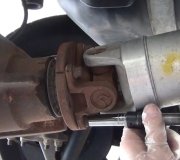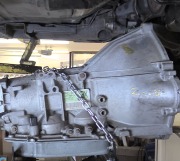AWD
AWD systems are intended for use in high and low traction situations without operator input. These systems will generally be quieter on high traction surfaces than a similar 4WD used in 4HI or 4LO. However, these systems will generally make more noise than a similar 2WD vehicle simply because there are more parts rotating and more gear sets interfacing. Once again, these systems may make more noise in turns, and in some situations you may be able to feel the system operating, even on high traction surfaces. Additionally, you may feel transfer case operation in on-demand AWD systems. These systems generally react to a speed difference between the front and rear axle and it may be possible to detect this by hearing a noise, or actually feeling the engagement of the system.
Automatic Transfer Cases
Automatic transfer cases will have the characteristics of both the Part-Time 4WD and the AWD systems depending on the mode selected. If the transfer case is operated in 4HI or 4LO, it will behave as a Part-Time 4WD system. If it is operated in the Auto 4WD mode, it will behave like an on-demand AWD system.
Driveline noises in 4WD or AWD vehicles caused by loading may be mistaken for transfer case or front axle noise because they can sound very similar. Four-wheel drive noises caused by loading may exhibit the following conditions:
"� The noise will be greatest on a clear, dry road and decrease on a low traction surface. Front axle or transfer case noise caused by bearings, ring and pinion, or planetary gearing will be similar on all surfaces.
"� The noises or feel that can be expected will increase while making a tight turn.
"� The noises may be changed from a deceleration to an acceleration condition (or acceleration to deceleration) by raising or lowering tire pressure at one end of the vehicle.
TIRES
Tire rolling rates can be a major factor in operational characteristics. Consider the following important items:
"� All tires are the same size and brand. Tires of different brands may have different circumferences (or radius) even if they are the same size.
"� Tires are set to factory recommended pressures. A tire with low air pressure will roll at a different rate.
"� All tires have approximately equal amounts of wear. Tires with different amounts of wear will roll at different rates.
"� All tires are the same tread type. Don't mix on-off road, all-season or street tires on the same truck as they may have different circumferences and roll at different rates.
"� One or more of the tires may show small, short scratches around the circumference of the tire tread. The tire "scuffing" on the road surface causes these scratches.
Wednesday, November 19th, 2008 AT 3:00 PM


